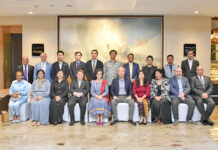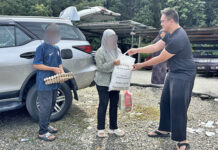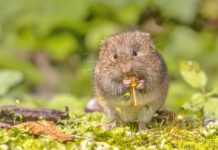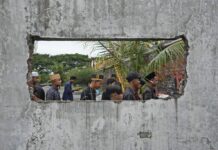ANN/THE STARS – Tucked away in a quiet corner of Klang, Selangor, a 0.3-hectare plot of land thrives as a model of rejuvenation and renewal.
Sunlight streams through a lush canopy of shrubs and trees, illuminating a winding path through a meticulously cultivated forest nestled between a home and an office.
The property boasts over 286 plant species, a greenhouse for experimental plants, a compost bay, an edible herb garden, and a mature food forest.
For Abdul Razak Abdul Aziz, his wife Intan, and their family of eight, this forest has provided a steady supply of ulams, vegetables, and fruits. Twenty free-range chickens roam the land, producing 10-20 eggs daily while aiding composting by consuming kitchen scraps.
This flourishing sanctuary stands as more than a symbol of resilience – it’s the heart of a remarkable recovery journey. Abdul Razak and Intan’s path to farming and food forestry began out of necessity, driven by their deep connection to nature.
With design backgrounds, they combined their eye for beauty with a commitment to sustainability, embracing farming as a way to live more intentionally.
Eighteen years ago, Abdul Razak and Intan, despite their lack of experience, ventured into goat farming, driven by his late father’s lifelong dream and their shared aspirations.

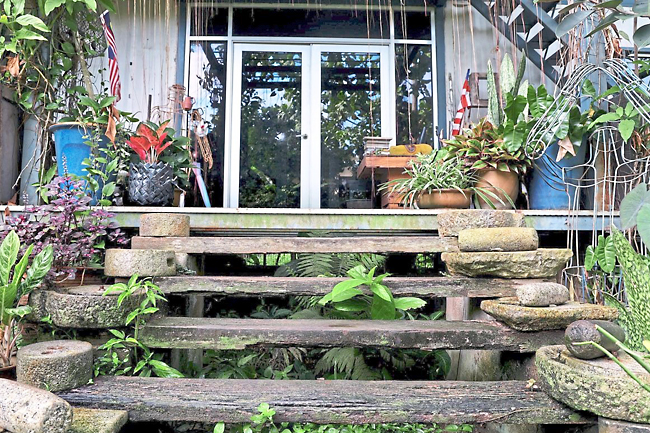
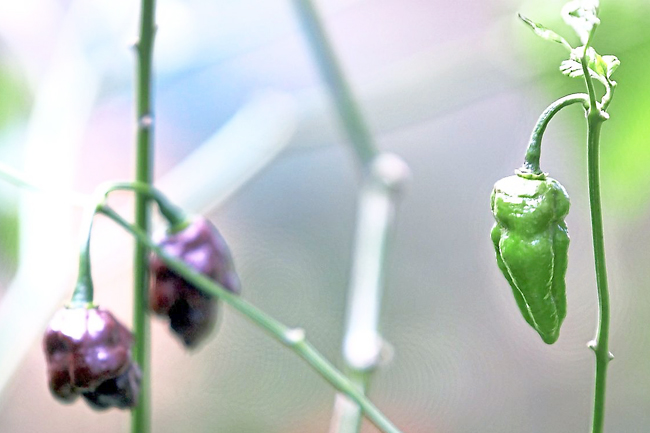
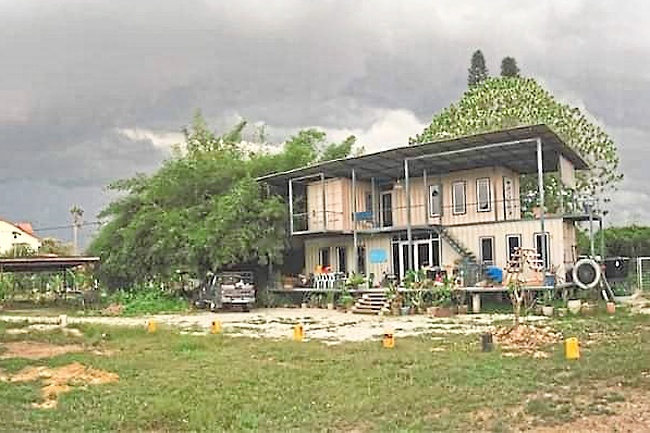
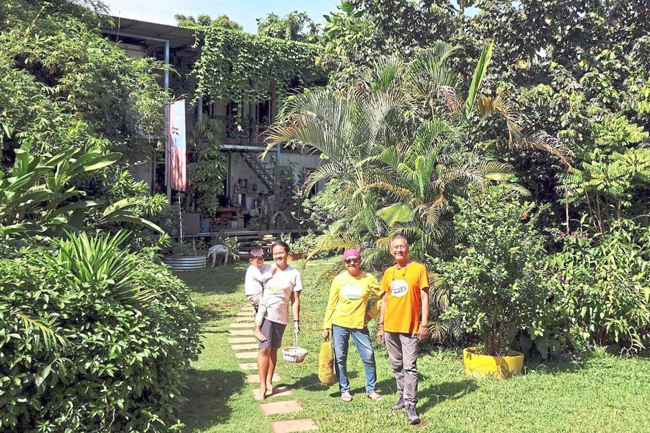
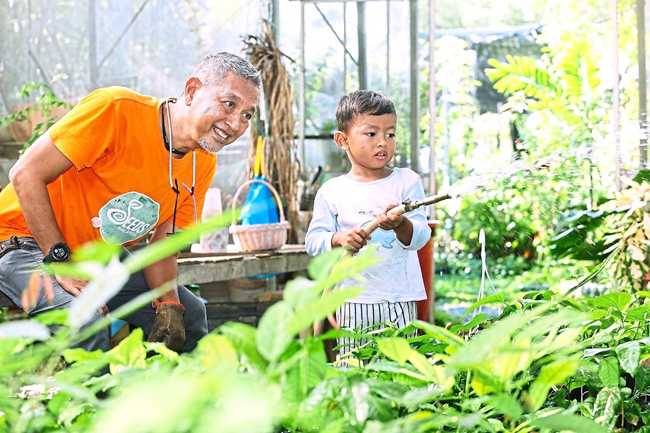

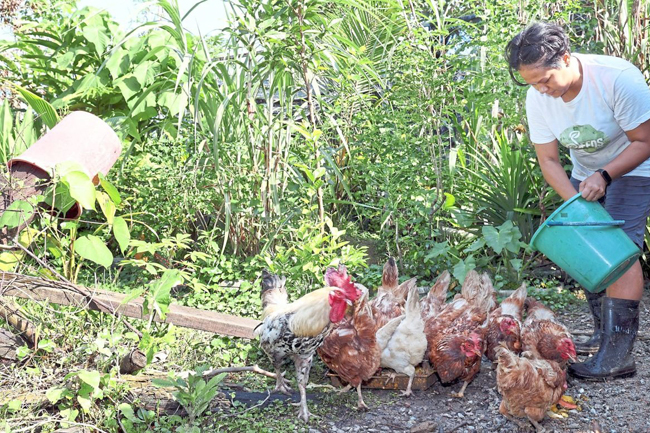
“We were two designers who didn’t know anything about farming. But we called ourselves farmers by design,” recalled Abdul Razak.
Due to the COVID-19 pandemic, they closed the goat farm, redirected their focus to their sustainability consultancy with Seeds Malaysia and embarked on restoring the land at their family home in Klang.
However, Abdul Razak faced a daunting challenge with degraded soil on the plot; it was layered with clay, peat and water, making it inhospitable for plant growth.
“Before we started rehabilitating the land, everything we planted on the land died within three months,” he recalled.
He researched case studies in Malaysia and from around the world and was committed to listening to his own land’s cues.
Abdul Razak further drew inspiration from the Loess Plateau project in China, where extensive restoration efforts transformed once-desertified soils into thriving ecosystems within 12 years, utilising food forests. “I got goosebumps when I saw the video, and when your hair stands like that, that’s what gets me going,” he said.
Motivated by these success stories, as well as insights from permaculture experts like Geoff Lawton and Rhamis Kent, Abdul Razak’s journey took a pivotal turn when he stumbled upon a video featuring the late Professor Dr Akira Miyawaki.
This renowned Japanese botanist demonstrated the creation of a food forest within five years, fuelling Abdul Razak’s curiosity and prompting him to experiment with various concepts on the land to boost soil health and stimulate plant growth.
What began as an experimental venture quickly exceeded expectations. Abdul Razak’s approach, which involves consistent compost application, enzyme use and strategic plant selection, proved highly effective.
“We initially planted nitrogen fixers like gelenggang (cassia senna), petai belalang, moringa and tamarind in a grid pattern.
“Within just three to four months, we witnessed growth beneath the trees. As we expanded to include other nitrogen-fixing plants, the landscape flourished. I can confidently say that nitrogen-fixing plants can rejuvenate any soil. Their roots penetrate clay and promote soil health.”
Reflecting on their progress, Abdul Razak said, “It started as an experiment, but the growth was exponential. We even saw our first 5.5 metres tree within 20 months, and we’ve been thriving ever since.”
THE CONCEPT OF FOOD FORESTS
A food forest in permaculture, also known as a forest garden, mimics the structure and function of a natural forest but focuses on plants that are useful to humans and animals.
The fundamentals of a food forest are the seven diverse layers of vegetation, including trees, shrubs, herbs, vines and ground cover plants, arranged in a way that maximises biodiversity and a self-sustaining ecosystem.
In an ideal food forest, seven plants can be grown together in one square metre of land.
Abdul Razak’s food forest hosts over 45 plant species, including nam-nam, cherimoya, gooseberry, mahkota dewa, malinja (used to make Indonesian emping), gajus, bidara (local apple), tamarind, ketum ayam (a protein source for chickens), pokok kluih (a malaysian tarap species), moringa, chaya and cincau hijau perdu (Premna oblongifolia).
A diverse array of crops coexists harmoniously, carefully selected and intermingled to foster mutually beneficial relationships.
Through techniques like companion planting and nutrient cycling, external inputs and human intervention are minimised.
For instance, pineapple is strategically planted alongside his nangka tree, as the pineapple yields a harvest while the nangka tree matures, maximising productivity within the space.
Abdul Razak attests to the efficacy of this approach, stating, “If you have three or four layers, then the ecosystem starts evolving by itself.”
Reflecting on their initial experimentation, he recalled starting with a modest three metres x 4.5 metres sand pile, once used by his late father for construction repair.
Today, it serves as a thriving terrarium – a living testament to the self-regenerating, self-propagating and self-watering nature of a food forest. “We don’t do anything to that pile anymore,” he remarked. “And it continues to grow and grow.”
FOOD FORESTS IN URBAN LANDSCAPES
Food forests can thrive even in urban environments, which challenges the traditional belief that farming requires vast expanses of land. Abdul Razak’s experience with a 465 square metres experimental plot demonstrates that even small areas can yield significant results.
Urban dwellers can replicate this on a smaller scale, whether in their own backyards or community gardens, thereby contributing to food security and environmental sustainability.
According to Lawton, “Food forests can solve many of today’s food problems”. In urban areas, small kitchen gardens and urban food forests are emerging as sources of fresh produce and greenery. These initiatives not only mitigate urban heat and improve air quality but also create green spaces that foster community and well-being.
Abdul Razak shared an inspiring example from a restaurant in Selangor where staff created a food forest in a small area measuring just 1.5 metres x 4.5 metres.
“I was amazed to see over 20 plants thriving there,” he said. “The worker simply scattered seeds, and now it’s flourishing with banana, mango, curry, tamarind and serai.”
Living in the tropics, Abdul Razak recognises nature’s inherent advantages. “If we learn from nature and cooperate with it,” he believes, “the possibilities are limitless. Nature has solutions for us.”
He recounted an anecdote about a neighbour who initially doubted the viability of his densely planted garden but later followed suit after learning about Miyawaki’s work.
Abdul Razak also suggests practising “food forestry” on balconies, using pots or containers.
“Even though the roots don’t connect, they fight for sunlight. Some grow bigger and they connect with each other somehow. We have done projects with just 0.3 metres of soil.
Forests don’t have to be big. I have seen apartments that grow 50 vegetables on their balconies.
“This morning, I looked out from my window and felt blessed because I could count 20 to 25 things I could eat just within that frame,” he said.
Abdul Razak is on a mission to establish more food forests in the city. He believes that this is the solution, stating, “If we go back to the roots of what you like to eat and plan your garden, and multiply that by a thousand or a million, and if 10 per cent of the world population farms their own food, we can all survive because 10 per cent will not waste 50 per cent of the food.”
Abdul Razak’s food forest has transformed his surroundings in remarkable ways. “The bird population has flourished, and it’s at least two degrees cooler now. You can see how the trees co-exist with animals.
HEALING THROUGH NATURE
Soil regeneration has also been a game-changer, with Abdul Razak noting that you can spot earthworm castings all over.
This remarkable change underscores his belief that food forests hold the key to addressing numerous challenges.
As he proudly declared, “We don’t have waste, in fact, I have to go to the market to collect fruit and vegetable waste to feed my worms.”
For Abdul Razak, his food forest became a lifeline during a crucial chapter in his life. Diagnosed with stage IV prostate and bone cancer in 2022, he embraced a natural approach, guided by the belief that “Nature has a way around itself. The real suppressor is your body, and medication is just to help”.
Abdul Razak is now recovering from cancer, and this philosophy has shaped his recovery journey, highlighting the healing potential of food, nature and holistic practices.
Abdul Razak’s experience underscores the transformative power of cultivating a food forest.
“There is tremendous joy when I collect my own chicken eggs. My lifestyle has helped with my recovery because my stress levels have gone down, with exercise and 200 plants in abundance at my doorstep.”
Abdul Razak has found solace and strength in tending to the land as part of his journey to recovery. His dedication in nurturing the food forest has breathed new life into the land, inspiring those around him.
Today, he cherishes a newfound lease on life, embracing a mantra of self-reliance, “If it is to be, it is up to me.” – Beatrice Yong



